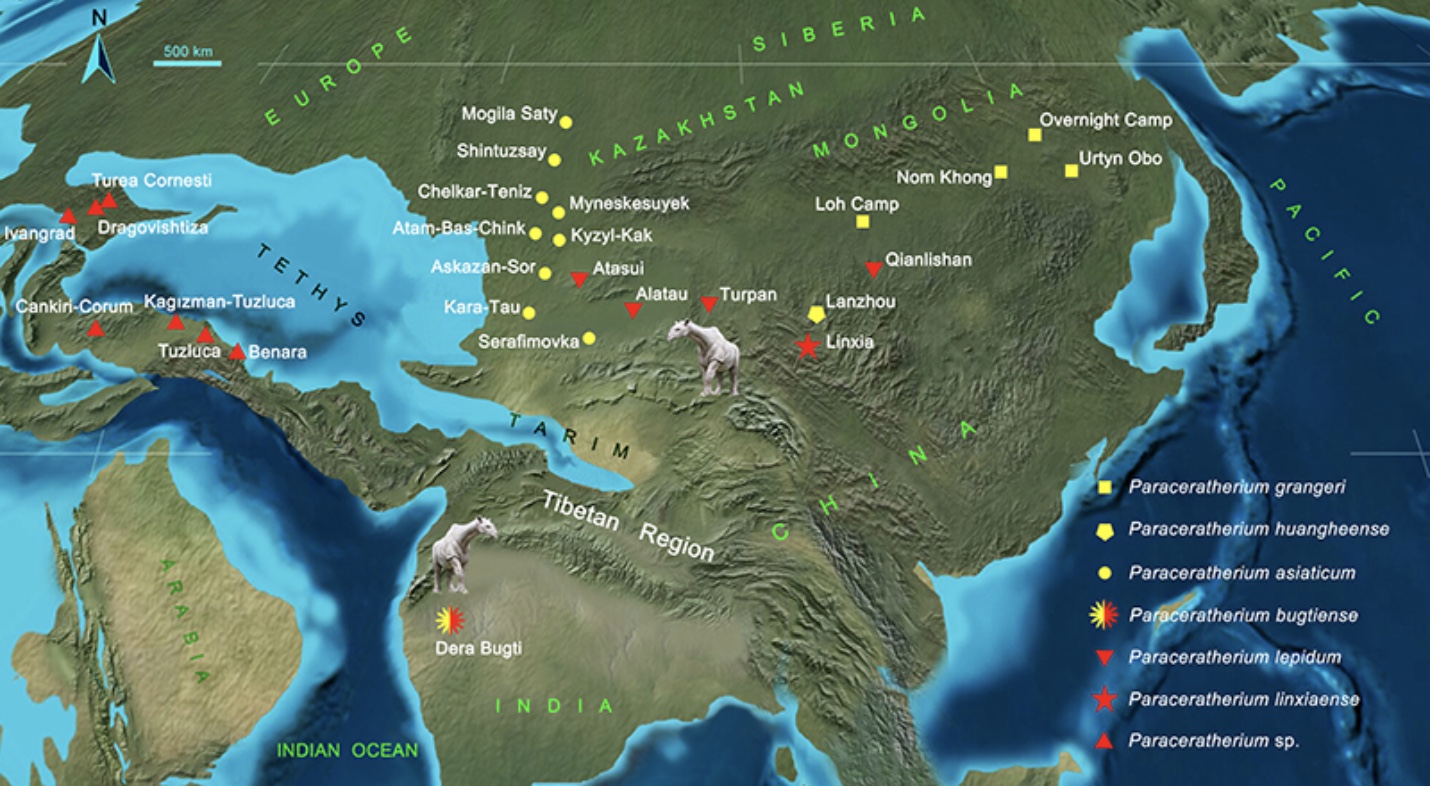Rhino fossils found in China have revealed that the newly-discovered species Paraceratherium lixiaense, or Linxia Giant Rhino, was one of the largest mammals to ever live on Earth.
This rhino species (which may have looked like the artist’s rendering above) lived 26.5 million years ago and weighed in at 21 tons, with a shoulder height of approximately 16 feet and a body length of about 26 feet. Its head may have been about 23 feet off the ground. That makes it taller than a giraffe and heavier than four elephants. Its skull and legs are bigger than all other reported land mammals.
The research on this new species was published last week in a study in the journal Communications Biology.
“What’s extraordinary about this particular thing is that it’s a wonderfully preserved fossil, so it tells us a lot about the anatomy of the individual group,” Lawrence Flynn, a co-author of the study, told USA Today.
The fossil discovery from 2015 is significant and unusual because the scientists found an intact skull in the Linxia Basin in Gansu province, along with an axis and two thoracic vertebrae from another individual, according to a press release. This site at the northeastern edge of the Tibetan Plateau has been yielding up discoveries — mostly in rare fragments — since farmers found “dragon bones” there in the 1950s, Live Science notes.
“Usually fossils come in pieces, but this one is complete, with a very complete skull and a very complete jaw, which is rare,” Tao Deng, the director of the Institute of Vertebrate Paleontology and Paleoanthropology (IVPP) at the Chinese Academy of Sciences in Beijing, whose team discovered the remains, told CNN.
These animals probably lived in China, Mongolia, Kazakhstan, Pakistan, and some parts of Eastern Europe. Scientists are using its discovery to help determine how ancient rhinos dispersed across Asia during the Oligocene period of geologic history.

The researchers say the rhino’s existence points to a high level of vegetation productivity in the parts of Asia and Europe where they lived. When the climate became a lot drier, which was inhospitable to vegetation growth, it ultimately led to the extinction of animals that relied on it for sustenance, including the Linxia Giant Rhino.
“It was a much drier climate with lots of open turf, and trees were about the only resources that large mammals could live off of,” Deng told NBC News. “So they would go from one stand of trees to another.”
Ancient giant rhinos did not have the characteristic horns of modern rhinos. That feature developed much later in their evolution.
This story originally appeared on Simplemost. Checkout Simplemost for additional stories.


